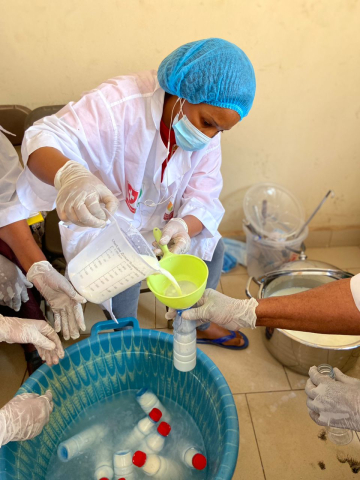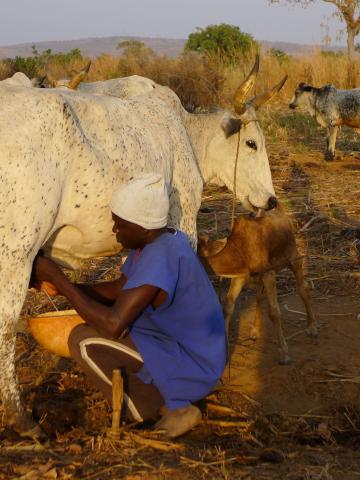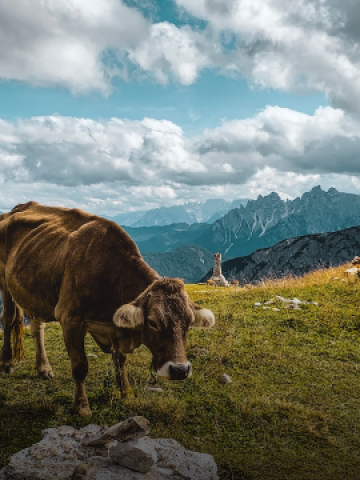In Guinea, the local milk industry is characterized by: a shortage of milk due to the difficulty of acquiring high-performance animals; poor access to appropriate dairy farm facilities, feed and veterinary care; and a low level of stakeholder structuring and integration of the various links in the value chain around dairy basins and other services. Several actions will enable the scaling-up of models for milk and feed production sites, functional multi-service collection centers, diverse milk processing units, standardization of processed products and the promotion of models for the development of local milk markets.
This project is based on four main levers for action:
- Strengthening the institutional, organizational and technical capacities of beneficiary groups: This will enable the development of an organizational and institutional dynamic at the level of each beneficiary group, with a view to promoting a mode of operation based on basic principles defined collegially by the members and deemed legitimate. It is strategically based on training and support/advice on several themes (pasteurization, fermentation, sterilization, skimming, etc.) to master the local milk chain
- Strengthening the operational capacities of project beneficiary groups in milk production, processing and marketing.
- Development of interactions between project beneficiary groups: This involves interactions between producer and forage crop groups, breeders and dairy farmers, technical livestock services and industry players (groups, associations, federations, etc.)
- Capitalizing on the project's achievements: This refers to the entire system for monitoring and evaluating indicators and capitalizing on the project's achievements and failures
To create a favorable environment for increasing milk production (animals, fodder) and marketing dairy products, in order to provide sustainable employment opportunities for young people and women.
Specific objectives
The implementation strategy will be participatory, aiming to involve all stakeholders, and will be based on the following main aspects:
Résultat 1
- An entrepreneurial farm is set up
Résultat 2
- The organization of farmers to develop family-type dairy farming models that offer better conditions for local milk production is supported
Résultat 3
- Contractualization with local milk sellers is effective
Résultat 4
- Promotional actions for the local milk sector are promoted and supported





